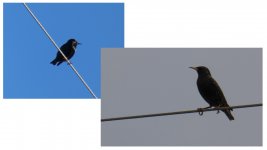knnthdhrvy
Ken Harvey
I was told the one on the top is a European Starling, and I looked up the one on the bottom and it looks like a European Starling as well--side by side they don't look that similar. Request ID on both please. top, south Texas early winter, bottom, New Braunfels TX, today. Thank you all.





